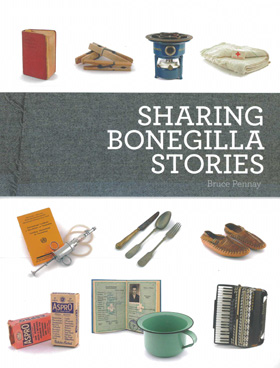History in July was held on 24 July at History House in Sydney. Emma Dortins reports. About forty PHA NSW members attended. that it was thoroughly enjoyable to catch up with old friends and colleagues, and to meet some of our newer members. We celebrated history with delicious food (from Miss Chu) and wine, and in excellent company.
Our guest speaker for the evening was Bruce Pennay, Associate Professor in History at Charles Sturt University. He told us about his recent work collecting photographs associated with experiences of post-war migrants who stayed at the Bonegilla Reception and Training Centre. This gave us a taste of the amazingly varied images created for the media and by journalists, for official purposes, and by the migrants themselves, many of whom were keen photographers. Pennay drew attention to the limitations of the photographic record in showing the range of migrant experiences – the camera inviting a smile, and photographers unlikely to document private moments of doubt, sadness, suffering and disappointment, which feature strongly in migrants’ memories. Nevertheless he has found a number of intriguing images which show moments of contrast with the official image of migration. One pictures two young women hunched over the washing scowling at the camera with mock resignation (what are they thinking?!) – very different from the cheerful women washing clothes in official photographs of the centre. This photograph is featured in his new book Sharing Bonegilla Stories, produced in collaboration with the AlburyLibrary Museum and the Migration Heritage Centre (see for more information on the book http://www.migrationheritage.nsw.gov.au/publications/sharing-bonegilla-stories/).
Bruce also pointed us towards a fabulous initiative of the National Archives, digitising photographs and records associated with migration, Destination Australia.
Image: Cover of Sharing Bonegilla Stories

Sounds like a great night and a fascinating talk. Sorry I missed it!
Thank you Emma for a great review of History in July, and to Bruce for giving us a really interesting, though provoking talk. I have been thinking of what Bruce was saying about the available photographs not showing the sadness or hardship of the migration experience, principally because of people’s tendency to ‘mug’ for the camera. And then I thought perhaps those many images that show the subject with their back to the camera or walking away are in some way expressing this sadness?